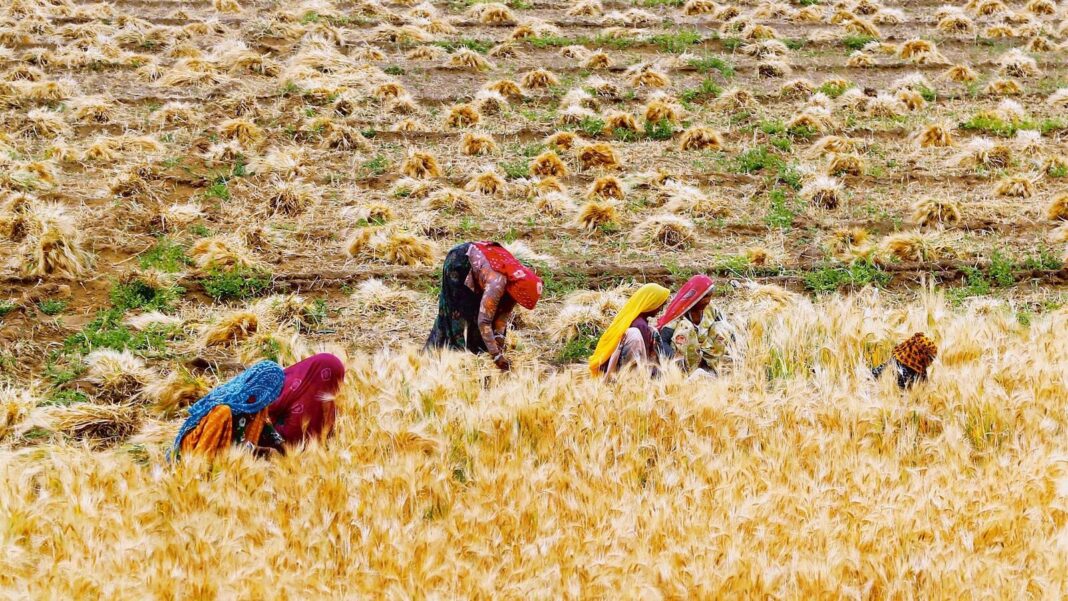
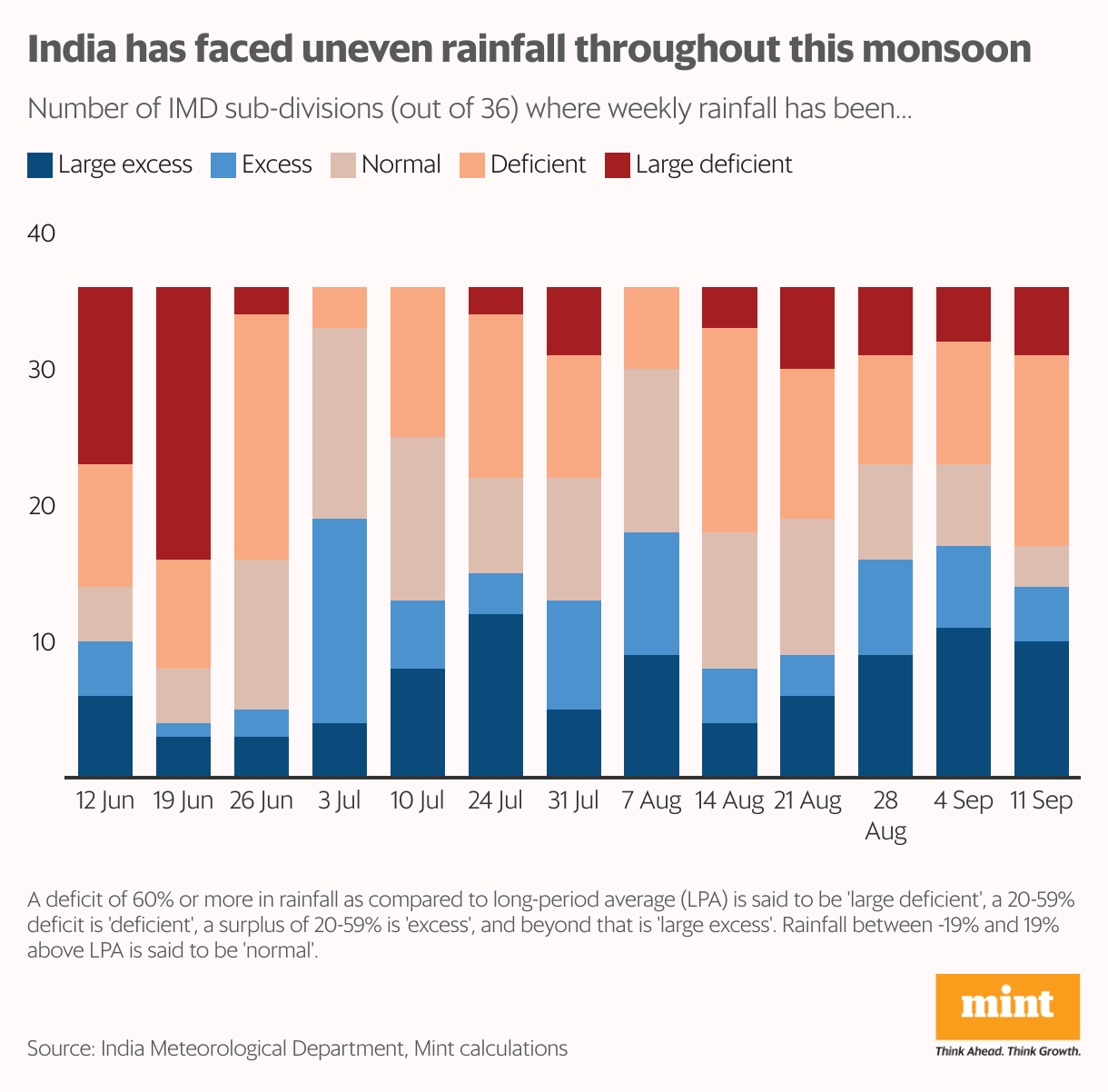
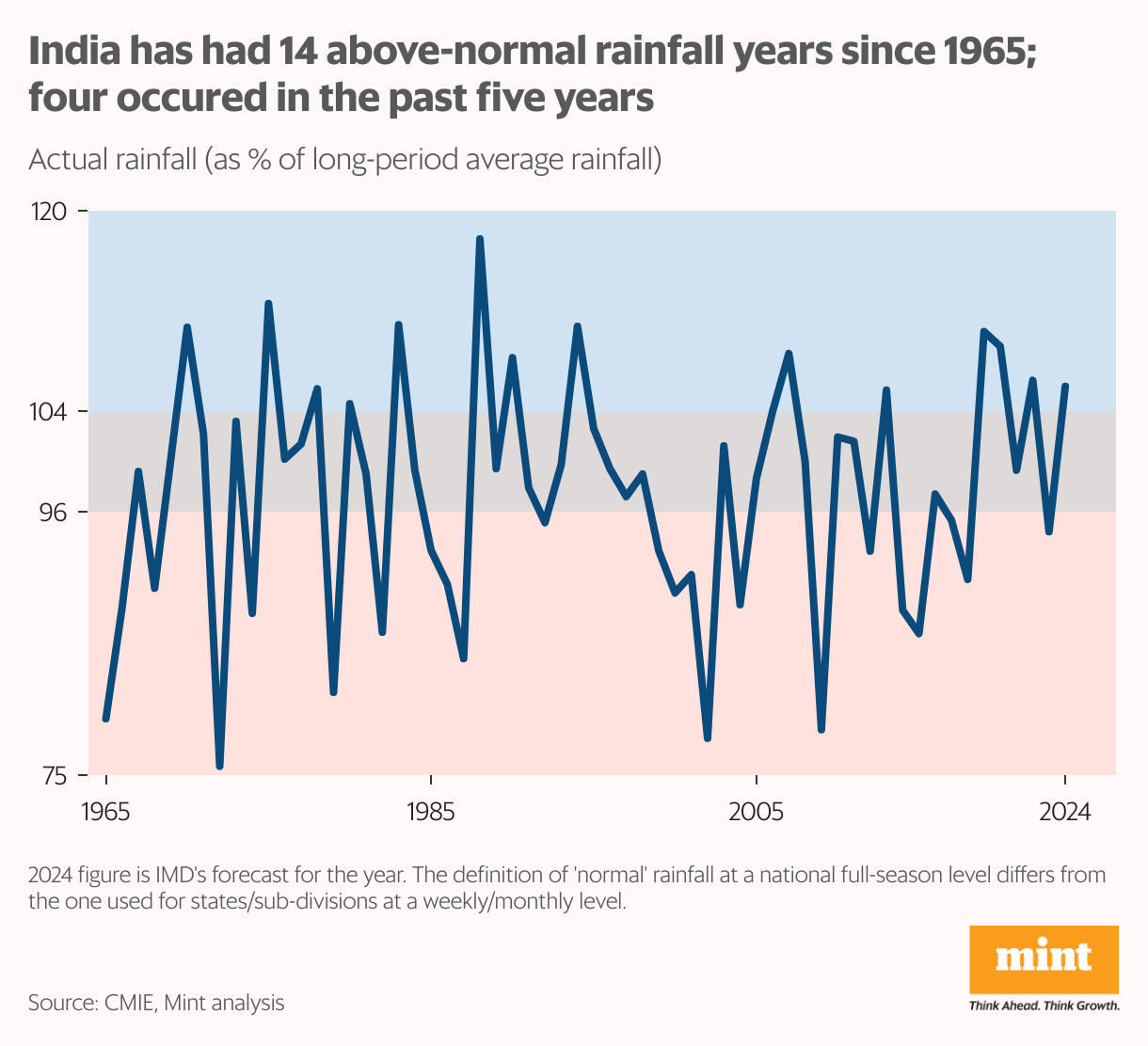
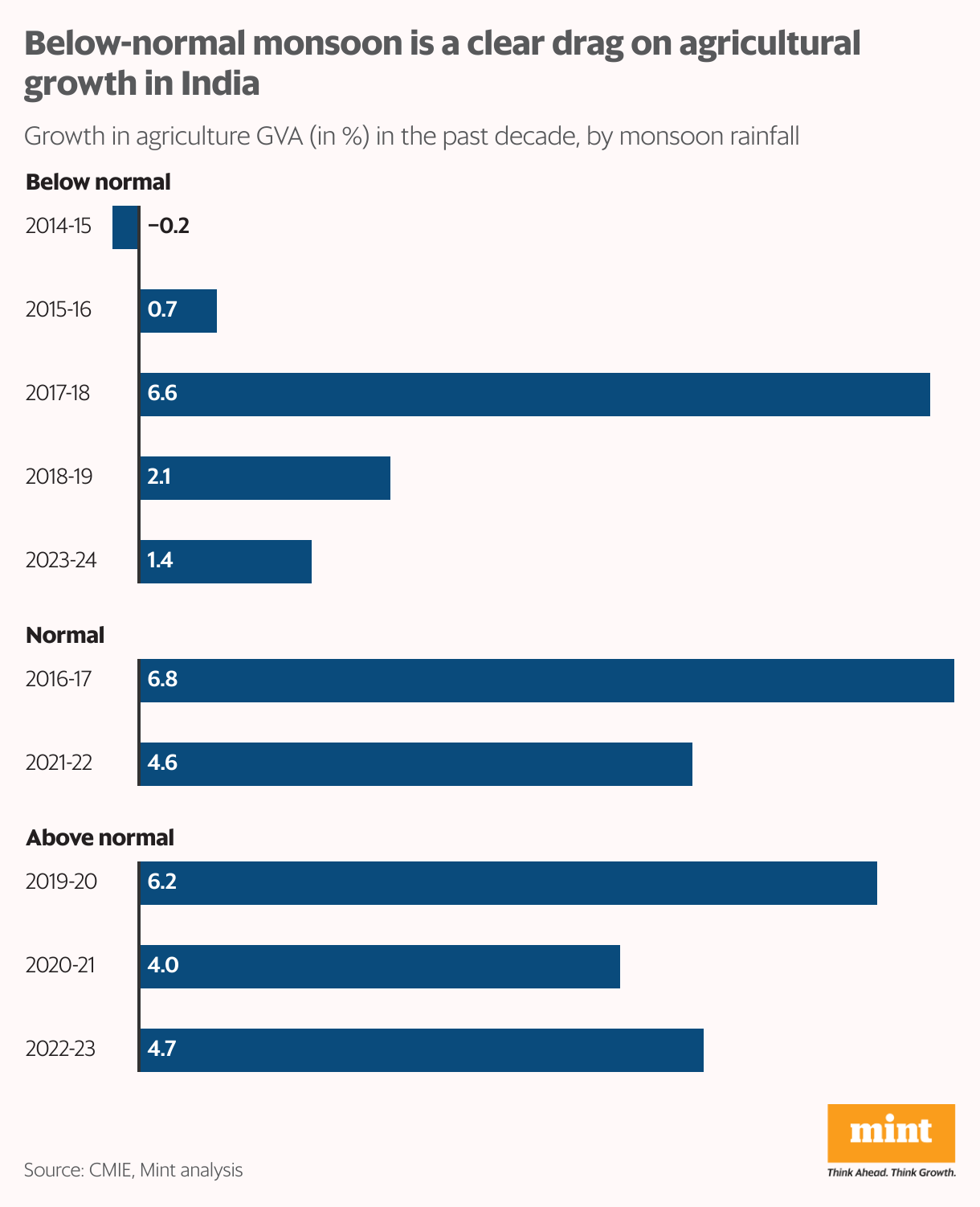
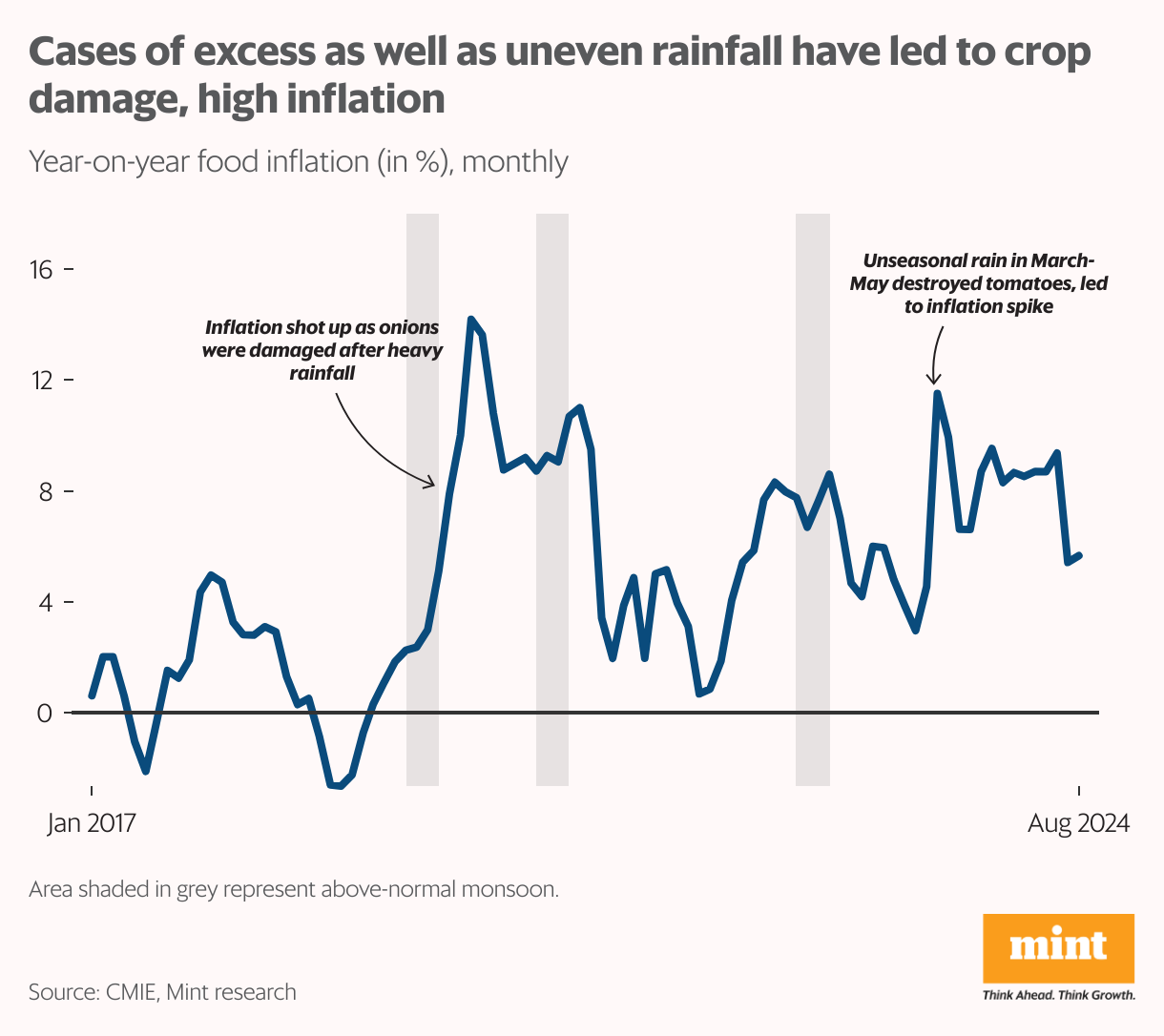
In Short:
India has had abundant rainfall this year following a poor monsoon last year, benefiting kharif crop sowing. However, excess rain in September poses risks to crops and inflation. While the agriculture ministry estimates crop loss at 2-4%, regions like Telangana and Maharashtra report significant sowing area impacts. Historically, excessive rainfall does not significantly harm agricultural output, but it can lead to price spikes and inflation uncertainties.
Good News and Concerns: A Closer Look at India’s Monsoon and Its Impact
After what seemed like a lackluster monsoon season, **India** is now experiencing a wave of abundant rainfall this year. This influx has been a blessing for the sowing of kharif crops in August, offering a much-needed boost after last year’s disappointing production figures. However, as we approach harvesting season, the excessive rains in September pose a threat to these crops, raising concerns about potential impacts on inflation.
September Showers: A Double-Edged Sword
This September, rainfall has soared to an impressive 8% above the normal levels. States such as **Telangana**, **Andhra Pradesh**, **Maharashtra**, and **Gujarat** have been specifically hit hard, receiving either ‘large excess’ or ‘excess’ rainfall, according to a recent analysis by **Mint** using data from the **India Meteorological Department (IMD)**.
However, it’s worth noting that the progress of the monsoon hasn’t been consistent across the country. The **IMD** has tracked varied patterns: June experienced deficient rainfall, July and August saw abundant rains, and now, September presents a mixed bag of both excess and deficient rainfall. Regions like **Bihar** and **Punjab**, which are critical for wheat production, have faced significant rainfall shortages.
In a note released on September 16, **Emkay Global Financial Services** remarked, “With overall sowing nearly completed, attention will soon shift to the harvesting season. The likelihood of higher-than-normal rainfall could jeopardize crops and inadvertently influence food inflation.”
While the **Agriculture Ministry** predicts crop losses to be between 2-4%—not alarming enough to greatly affect overall production—there’s a history of excess and unpredictable rainfall leading to price surges, making inflation management a tricky task.
The Changing Monsoon Landscape
Historically, **India** has seen periods of normal to below-normal monsoon rainfall. However, we are noticing a shift, with above-normal rains becoming increasingly common in recent years. Since 1965, **India** has experienced 23 years of below-normal rainfall, another 23 years of normal rainfall, and 14 years of above-normal rainfall—four of those above-normal years occurring in just the last five years, including the **2024 IMD** forecast.
Experts express a measure of caution. While the government remains relatively unconcerned about crop losses this year, analysts suggest that up to 40% of paddy sowing areas in regions like **Telangana**, **Coastal Karnataka**, and **Andhra Pradesh**, along with 20-30% of **soybean** cropping in **Gujarat** and **Maharashtra**, are at risk. The losses for **tur** and **urad** crops are less severe, with only 5-10% of the sowing area affected. As **SK Pradhan**, additional director general at the **Indian Council of Agricultural Research (ICAR)** notes, “While staple foods may not see a shortage, crop damage is anticipated.”
The Silver Lining?
Excess rainfall in September might stir worries about rising food prices, yet the track record shows it hasn’t had dire consequences on agricultural output over the past decade. Throughout five years of below-normal monsoon rains, **GVA** (Gross Value Added) for agriculture has either dipped or only registered minimal growth. Conversely, during the three above-normal rainfall years, agricultural GVA growth has ranged from 4.0% to 6.7%. This suggests that the damaging effects of insufficient rain could be more severe than those of excessive rainfall.
This doesn’t mean that hefty rainfall comes without consequences. A nuanced supply-demand dynamic often leads to price pressures, as highlighted in a paper from the **Reserve Bank of India** co-authored by deputy governor **Michael D Patra** earlier this year. The paper noted that conditions like climate change—stemming from phenomena such as heatwaves and erratic rainfalls—are exacerbating vulnerabilities in food pricing.
Price Swings in the Spotlight
Since 2019, **India** has seen its fair share of inflation, particularly induced by wild fluctuations in food prices. A cascade of events—from the pandemic and the conflict in **Ukraine** to climate change and excess rains—has kept inflation levels high. Following years of stability, the food inflation rate surged in September 2019, peaking at 14.19% in December of that year, primarily due to torrential rains devastating onion harvests. Fast forward to July 2023, and similar rain disruptions led to another spike in food inflation as delays affected tomato transportation due to heavy rainfall. It’s evident that each year of above-normal monsoon has been linked to food inflation surges.
While prices impacted by such disruptions tend to stabilize quickly, the uncertainty they introduce can significantly distort inflation expectations. As **Kanika Pasricha**, chief economic adviser at **Union Bank of India**, emphasized, “The potential for unseasonal rainfall associated with **La Nina** during the crucial harvest months of October-November warrants close monitoring.”

